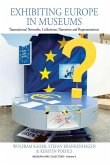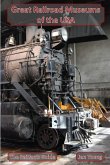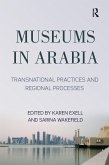Among the most important contributions the National Park Service has made since its founding in 1916 has been the development of extraordinary museum technology and administration---national in scope and international in influence. This manual, a distillation of what many persons have learned about the day-to-day operations of museums, is meant to provide curatorial standards and serve as a reference for museum workers everywhere. This book was written by Ralph H. Lewis, an outstanding museum administrator and curator with many years of experience in the National Park Service. It is an outgrowth of an earlier (1941) volume entitled Field Manual for Museums by Ned J. Burns, a work that went out of print during World War II and is, even to this day, in demand by curators and museum managers. In this present manual, Mr. Lewis carries on a tradition of excellence in museum practice that can be traced back to the mid-1930's when Carl P. Russell set the basic pattern for museum work in the national parks. In those early years most park museums could not afford or were too small to engage a full time professional museum staff. Dr. Russell set up centralized laboratories staffed by curators and preparators and provided the parks with exhibition and preservation expertise from this pool. The ordinary maintenance and operation of the museums were left to the superintendents who managed the parks, and to the archeologists, historians and naturalists who interpreted them.








